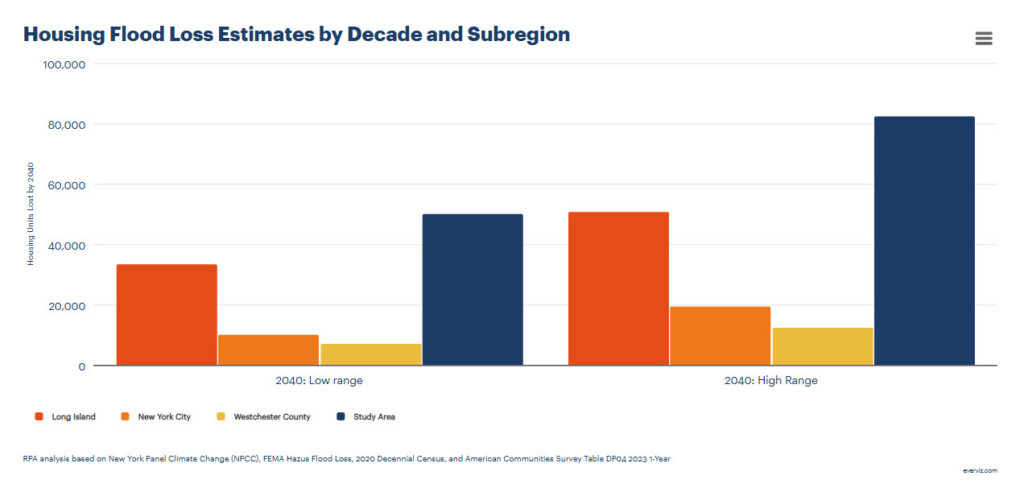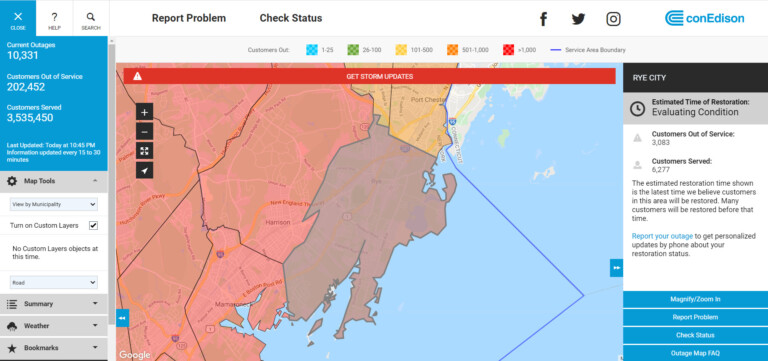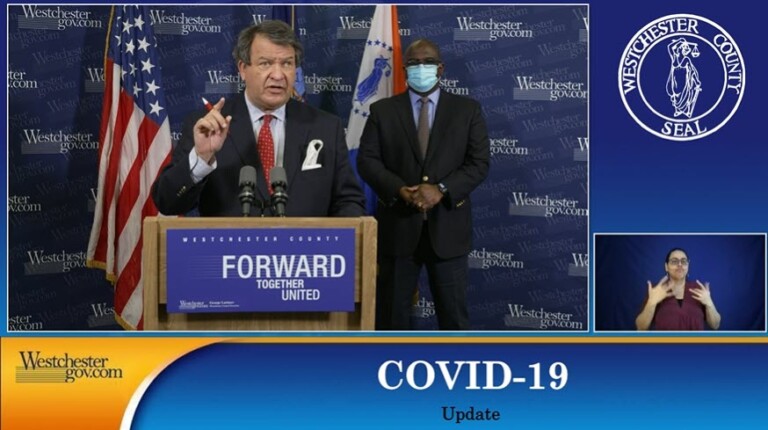Rye Could Lose Up to 1,900 Homes Due to Flooding by 2040

The City of Rye could lose up to 1,900 homes due to flooding by the year 2040, according to a report from the Regional Plan Association (RPA), a 100+ year old not-for-profit regional planning organization. The report details the tension between climate change impacts and the worsening housing shortage across the New York metropolitan area.
“For Westchester as a whole, we’re saying that something between 6,800 and 12,000 units could be lost by the year 2040,” said Marcel Negret, director of land use for the RPA. “In the City of Rye, that range is roughly something in between 1,000 and 1,900 by 2040.”
That is a significant amount, because the city itself has just over 6,000 housing units. You’re talking about something close to a third in the high range scenario of the [housing] stock could be lost, which is very concerning.”
What Do We Do?
What’s the answer? Some very careful, well considered and actionable comprehensive planning. Rye falls into the sweet spot of high growth potential and high flood potential.
“You are planning for compounding adaptation needs,” said Negret at RPA. “You’re planning to try to minimize those risks from flooding at the same time that you’re planning for future growth.”
So you have compounding challenges. It doesn’t mean that you can’t do it. The level of complexity, the scope of the work is more significant, and for those kinds of locations, there’s a need to do comprehensive planning that’s promoting growth, but at the same time, efforts to protect existing infrastructure and communities and properties through flood resilient design and other types of adaptive measures.”
Some of the considerations could be shore based measures to protect the coast from erosion, hard engineering such as sea walls, land elevation and levies and soft engineering such as natural or green infrastructure options, sometimes called nature based solutions.
Negret says zoning will need to focus growth on areas outside of flood prone areas. These might be transit oriented development, multi-family development and infill development (redeveloping existing areas by constructing new buildings on previously underutilized or vacant land, often within established neighborhoods). This type of planning will also require multiple levels of government as well as between public and private entities.

A Desperate Need for a Fresh Comprehensive Plan
“One of the first things… is a need for comprehensive planning,” said Negret, when told the comprehensive plan from Rye dates back to 1985.
“And so you say that the last plan was updated more than 30 years ago. There’s a desperate need to re-evaluate that and start working on an updated version for sure.”
The RPA official says any comprehensive plan needs to include Rye’s role and position within Westchester County. It also needs to consider future needs such as housing stock for downsizers or new families entering the area. On the laundry list of any planning process will be bulk requirements (things like height and FAR rules), parking requirements, building standards and related building code and zoning changes.
And after all this work many plans will be created and just sit on the shelf.
“Then it’s implementing [the plan] and that usually requires the city council and mayor to commit to implementing those actions or goals,” said the RPA’s Negret. “That’s not a short process, that’s something that doesn’t happen over a weekend… the sooner that process is started, the better.”
Read the RPA’s report Averting Crisis.






